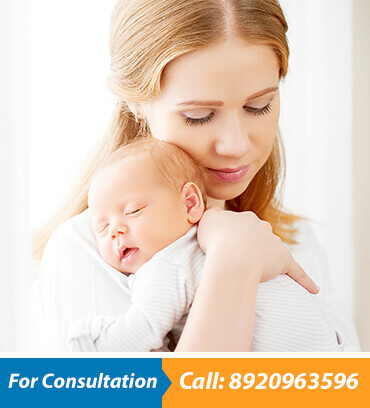IVF ( In Vitro Fertilization) also commonly known as test tube baby is a procedure to help childless couple in getting pregnant. This involves fertilizing an egg outside of the womb, then re-implanting the embryo. The eggs are obtained from the female ovaries and sperm from her partner, mixed in a plastic dish and placed in the incubator, where they develop in embryos which are then transferred in the womb.
IVF process bypasses the fallopian tubes (it was originally developed for women with blocked or missing fallopian tubes), it is the procedure of choice for those with fallopian tube issues, as well as for conditions such as endometriosis, male factor infertility and unexplained infertility or when all other treatment options have failed.
These are the basic five steps of an IVF cycle:
- Stimulation for multiple egg development: Injectable medicines are used for this.
- Egg retrieval: When the follicles are mature, the eggs are aspirated by means of ultrasound-guided egg pick up needle. It is a simple and easy procedure.
- Fertilization and embryo culture: Sperms are either mixed or injected into an egg. The resultant embryos are cultured for 3 or for 5 days.
- Embryo transfer: With the help of embryo transfer catheter embryos are delicately transferred in the womb.
- Pregnancy test: About 12-14 days after embryo transfer a blood test is done for pregnancy hormone.
Daily injections are a necessary part of IVF treatment. We have designed our medication schedules and injection type to minimise discomfort and stress; and our nurses carefully instruct and support every patient throughout this process. We use injections that are to be administered under the skin (subcutaneous) with a very fine needle. These are very purified injections, hence minimal side effects. After embryo transfer the supportive medications can be taken orally or vaginally, injections are rarely needed.
Because anesthesia is used for egg retrieval, patients feel nothing during the procedure. In this a vaginal ultrasound probe fitted with a long, thin needle is passed through the wall of the vagina and into each ovary. All the eggs are aspirated. Effect of anaesthesia goes away immediately. Patients may feel some minor cramping or spotting.
The procedure of IVF would start with the onset of periods. The entire procedure would take 18-20 days till embryo transferee places the embryos in uterus. However some patients would need some screening tests before the start of procedure. We advise out of town patients to come 1 week before the onset of periods and stay for 4 weeks till embryo transfer.
Most of our out of town patients return home the day after the embryo transfer — there is no medical reason to stay back or rest after the embryo transfer. All types of travel are safe. Sitting for an extended period of time will not affect chances of pregnancy. We recommend that patients traveling by air drink plenty of fluids, as circulated air can be quite dry, and dehydration should be avoided. Pregnancy test can be done at respective places.
The chances depend on the cause of infertility and age of the female. In women < 35 years of age success rate 45-50%, more than 35 years 35- 40%, Using Donor Egg 50-55 %
Is variable depending upon the type and dose of injections used for a women depending upon her ovarian reserve.
Yes absolutely. Research till date have found that they are at par with normally conceived babies in physical and mental growth with no added risk of any abnormality.
Following are the reasons for requiring a donor egg:
- Age more than 40 years
- Poor ovarian reserve is very low AMH ( Anti mullerian Hormone) or very High level of FSH hormone
- No ovaries
- Premature ovarian failure
- Previous multiple IVF failure
- Genetic disease
Surrogacy is when another female agrees to undergo embryo transfer of embryos (formed from eggs and sperms of the couple wanting pregnancy, undergoing IVF) and carry the pregnancy and hand over the baby to the genetic parents at birth. The child is genetically related to the parents and is only nurtured in the womb of the surrogate. It is used for women with absent womb or wherein it is unfit due to adhesions leading to recurrent IVF failure/ pregnancy loss.
Research till date have found that they are at par with normally conceived babies in physical and mental growth with no added risk of any abnormality.

